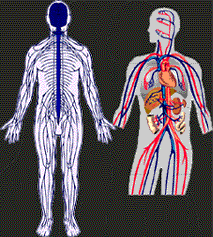| . | INTRODUCTION TO OCCUPATIONAL HEALTH |
. | |
Environmental Factors or Stresses |
|||
|
The presence of excessive amounts of biologically inert gases can
dilute the atmospheric oxygen below the level required to maintain the normal blood
saturation value for oxygen and disturb cellular processes. Other gases and vapors can prevent the blood from carrying oxygen to the tissues or interfere with its transfer from the blood to the tissue, thus producing chemical asphyxia or suffocation. Carbon monoxide and hydrogen cyanide are examples of chemical asphyxiants. Some substances may affect the central nervous system and brain to produce narcosis and/or anesthesia. In varying degrees, many solvents have these effects. Substances are often classified according to the major reaction that they produce, as asphyxiants, systemic toxins, pneumoconiosis-producing agents, carcinogens, irritant gases, and so on. |
||
| . |


